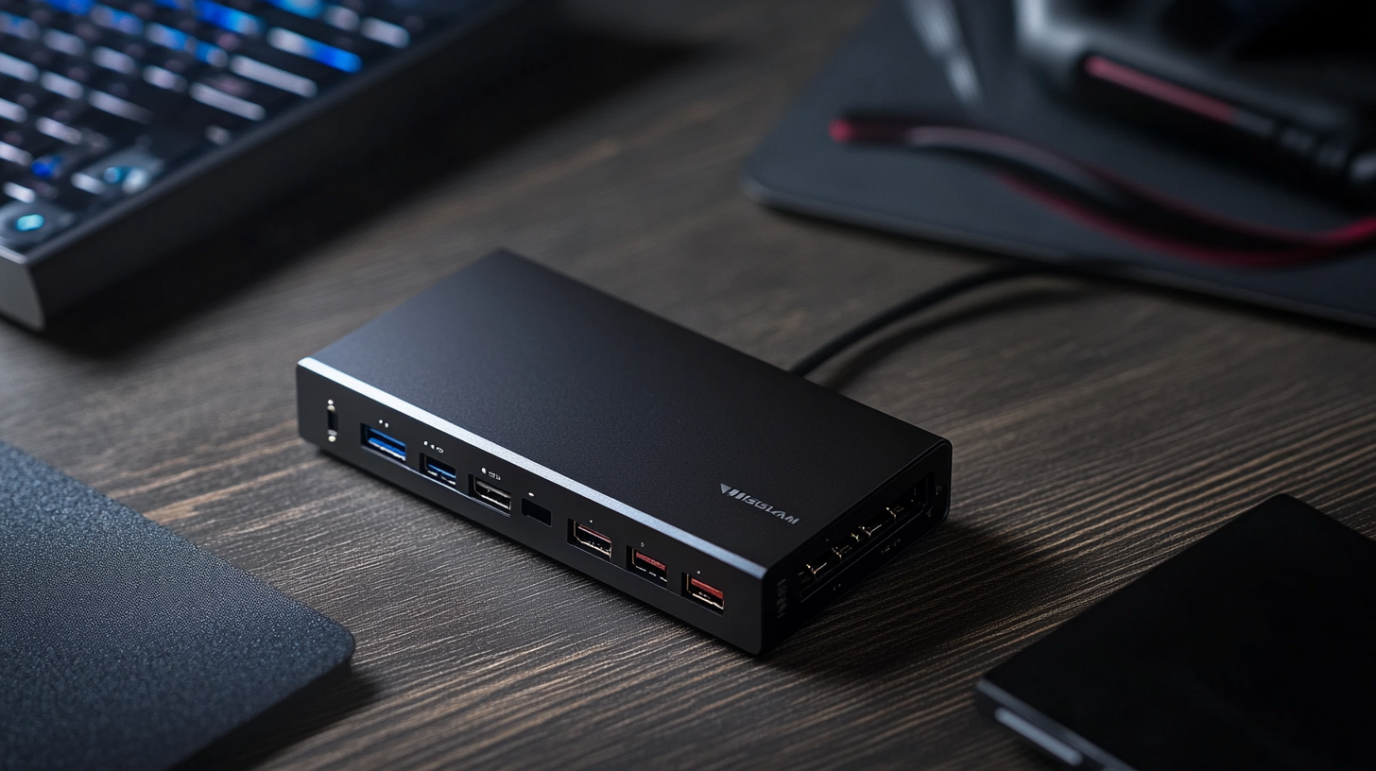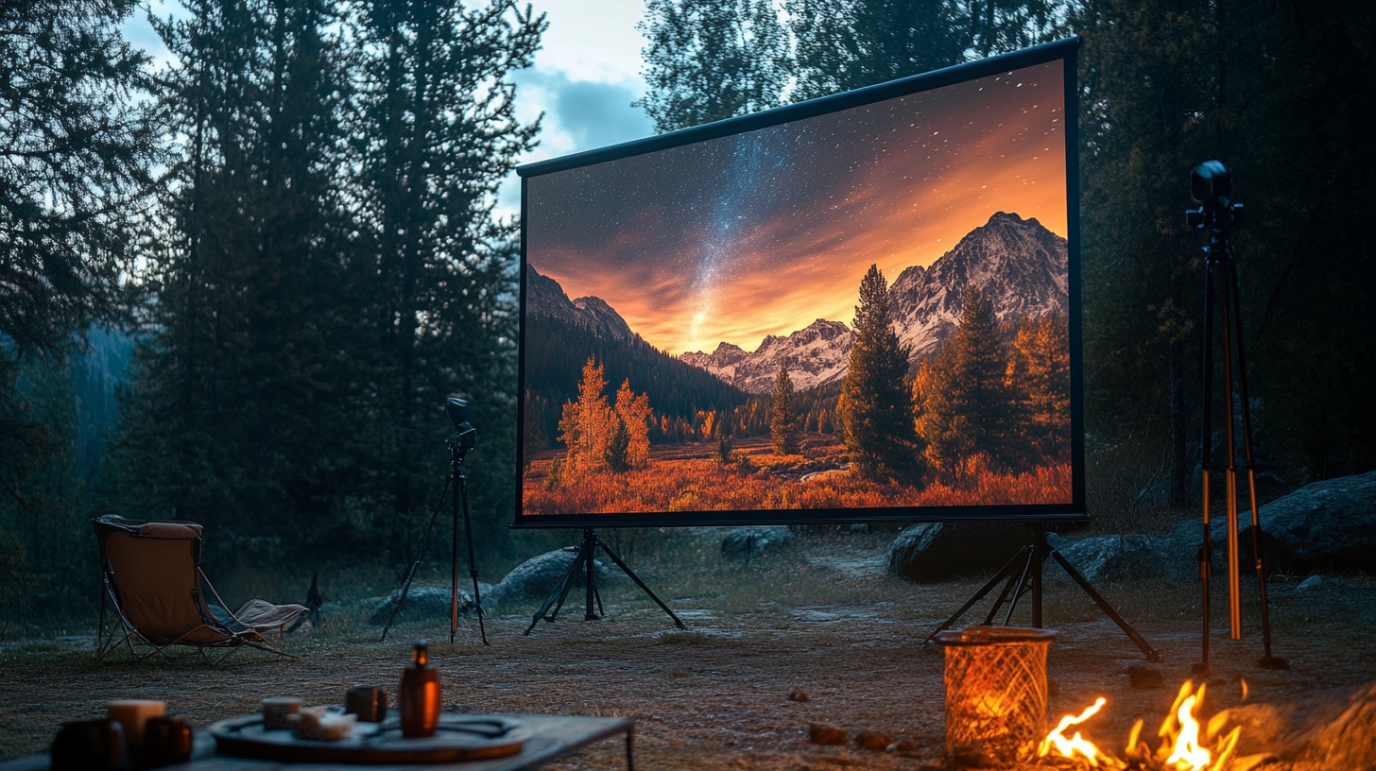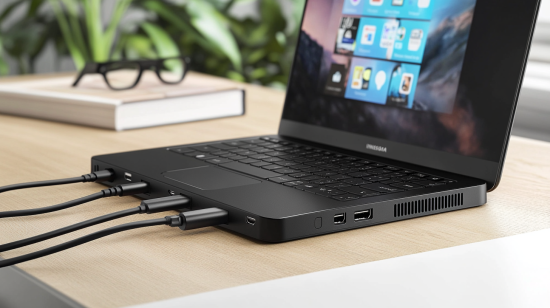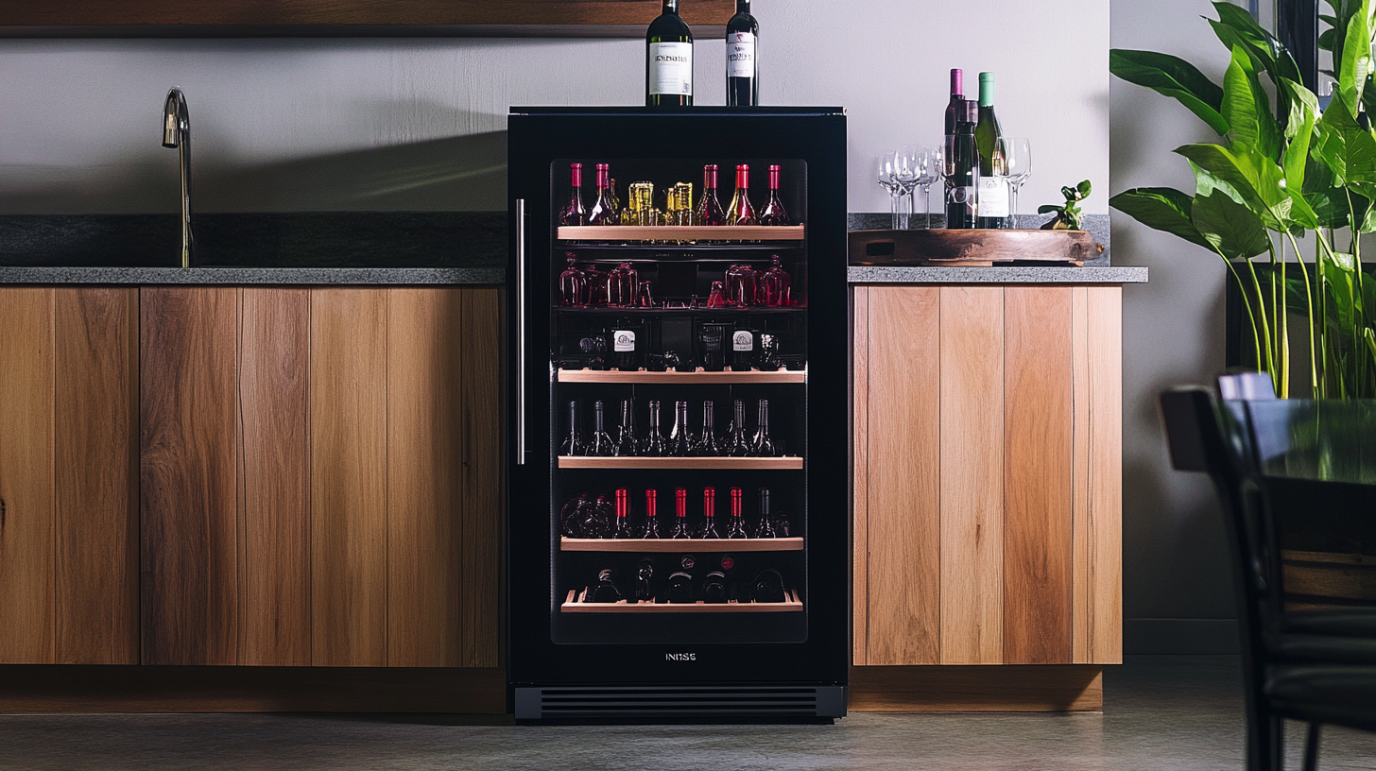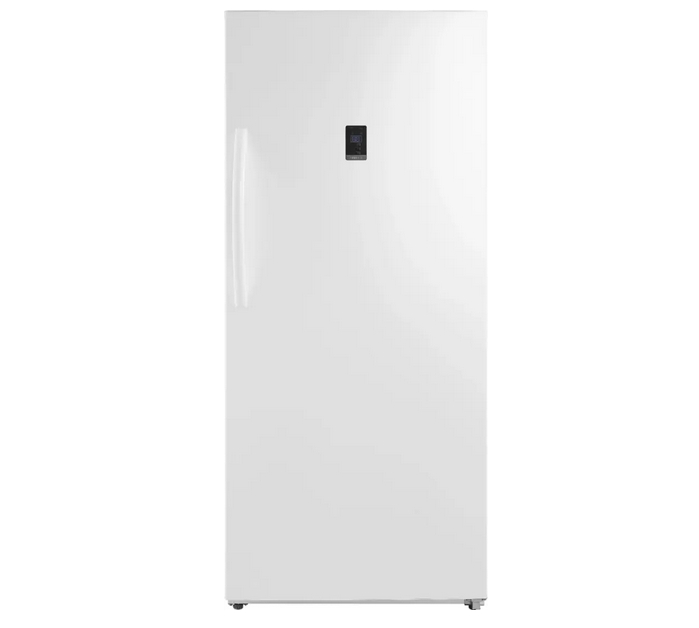
Insignia™ – 21 Cu. Ft. Garage Ready Convertible Upright Freezer with ENERGY STAR Certification – White
- Convertible design
- Freeze or refrigerate your food in this Insignia upright freezer simply by changing the temperature settings on the clear and convenient LCD display.
- Garage ready when set to Freezer Mode
- Works in temperatures from 0° to 110°F.
- 21.0 cu. ft. capacity
- Offers plenty of storage space for frozen meals, meats, ice cream and more.
- Keep your food organized and easy to find
- 4 glass shelves and 2 plastic drawers make it easy to keep frozen foods handy.
- Touch sensitive controls with digital display
- Enable easy adjustments.
- Door-open alarm
- To reduce the risk of temperature loss.
- Fast Freeze
- Delivers fast cooling to keep food fresh.
- Interior light
- Increases visibility so you can quickly find what you’re looking for.
$699.99
Finding the Perfect Extra Storage Solution for Your Home
As someone who’s battled the constant struggle of limited freezer space, I can tell you firsthand that investing in a standalone freezer was one of the best decisions I’ve ever made for my home. After months of research and comparison shopping, I finally settled on an Insignia Garage Ready Freezer, and the difference it’s made in my food storage capabilities has been nothing short of revolutionary. Whether you’re a bulk shopper, meal prepper, hunter, or just someone who needs extra frozen storage, I’m excited to share everything I’ve learned about these incredibly practical appliances.
Let me walk you through everything you need to know about Insignia Garage Ready Freezers—from what makes them special to how to choose the right one for your specific needs. The right freezer can completely transform your food storage capabilities and save you significant money in the long run.
What Exactly Is an Insignia Garage Ready Freezer?
Before diving into the specifics, let’s clarify what we’re talking about. Insignia is Best Buy’s in-house brand that offers affordable yet reliable appliances, including their popular line of standalone freezers. The “garage ready” designation is particularly important—it means these freezers are specifically designed to function properly in environments with fluctuating temperatures, like garages, basements, or outbuildings.
Unlike standard freezers that might struggle or fail in extreme conditions, Insignia Garage Ready Freezers are built with components that can withstand temperature variations from scorching summer heat to frigid winter cold. This makes them incredibly versatile for homes where dedicated indoor space is at a premium.
These freezers come in two main configurations: chest freezers (with a lid that opens from the top) and upright freezers (with a door that opens from the front, similar to a refrigerator). Each style has its own advantages depending on your space constraints and organizational preferences.
Cost Considerations: What to Expect
One of the most compelling aspects of Insignia Garage Ready Freezers is their affordability compared to many competitor brands. During my research, I found that prices typically range from about $179 for the smallest 5.0 cubic foot chest model to around $699 for the largest 17.0 cubic foot upright model.
Of course, prices fluctuate based on several factors:
- Size (cubic foot capacity)
- Style (chest vs. upright)
- Special features (adjustable shelving, fast-freeze options, etc.)
- Current promotions or sales events
What impressed me during my shopping process was discovering that these freezers often go on sale during major holiday weekends (Memorial Day, Labor Day, Black Friday), sometimes with discounts of $50-100 off the regular price. Best Buy also frequently offers free delivery on larger appliances, which can represent a significant additional savings.
It’s worth noting that while the initial purchase price matters, the true cost of ownership also includes energy usage over time. Fortunately, Insignia models are typically Energy Star certified, meaning they meet strict energy efficiency guidelines set by the EPA.
Where to Purchase Your Insignia Freezer
Since Insignia is Best Buy’s house brand, their stores and website are the primary retailers for these freezers. I found the in-store experience particularly helpful because I could see the different models in person and ask specific questions about features and warranties.
However, if you prefer online shopping, BestBuy.com offers the complete range of models with detailed specifications, customer reviews, and often the option for home delivery or store pickup. I ultimately purchased mine during a holiday weekend sale and saved about $75 off the regular price.
Occasionally, you might find Insignia freezers through other retailers like Amazon or through Best Buy’s eBay store, but the selection is typically more limited, and warranty service might be more complicated than buying directly through Best Buy.
Key Features That Set Insignia Freezers Apart
During my extensive research, several standout features convinced me that an Insignia freezer was the right choice for my needs:
Temperature Range and Control
The temperature control system in these freezers is impressively reliable. Most models feature an external temperature control dial that allows for easy adjustments without having to open the freezer. The temperature range typically spans from -10°F to 10°F, giving you flexibility depending on what you’re storing.
My upright model maintains a consistent temperature within about 2 degrees of the setting, which I’ve verified with an independent freezer thermometer. This consistency is crucial for maintaining food quality and safety.
Interior Organization Options
Depending on the model you choose, Insignia freezers offer different organizational features:
For chest freezers:
- Removable wire baskets that hang from the top rim
- Interior lighting (on most models)
- Some models include dividers for better organization
For upright freezers:
- Adjustable wire shelves
- Door storage bins
- Clear plastic drawers in some models
- Interior LED lighting
I particularly appreciate the adjustable shelving in my upright model, which allows me to reconfigure the space based on what I’m storing—whether it’s larger items like turkeys or stacks of smaller containers with prepared meals.
Exterior Design and Construction
The exterior of Insignia freezers features a clean, modern design with a textured white finish that resists fingerprints and scratches. The doors and lids seal tightly with magnetic gaskets that create an effective barrier against warm air infiltration.
Most models include leveling legs that can be adjusted to ensure the freezer sits perfectly level on uneven garage or basement floors—a small but important detail I’ve come to appreciate.
What “Garage Ready” Actually Means (And Why It Matters)
During my research, I discovered that the term “garage ready” isn’t just marketing jargon—it represents specific engineering adaptations that make these freezers suitable for unconditioned spaces:
- Enhanced insulation that maintains internal temperatures even when ambient temperatures fluctuate dramatically
- Strengthened compressors designed to operate efficiently in temperatures ranging from approximately 0°F to 110°F
- Reinforced seals and gaskets that prevent moisture infiltration in humid environments
- Condenser coils that resist corrosion from exposure to more dust and environmental factors
These adaptations are crucial because standard freezers often struggle or fail entirely when placed in garages or outbuildings. The compressors in non-garage-ready models typically aren’t designed to function properly when ambient temperatures drop below about 50°F, which can lead to thawed food and spoilage.
My garage in the Midwest regularly experiences temperatures from below freezing in winter to over 100°F in summer, and my Insignia freezer has maintained perfect internal temperatures throughout these extremes.
Available Sizes: Finding Your Perfect Fit
Insignia offers a range of sizes to accommodate different needs and spaces. After measuring my available garage space and considering my typical storage needs, I narrowed down the options:
Chest Freezer Models:
- 5.0 cubic feet (compact option ideal for small households)
- 7.0 cubic feet (mid-size option)
- 10.2 cubic feet (larger family option)
- 14.0 cubic feet (bulk storage option)
Upright Freezer Models:
- 5.8 cubic feet (apartment or small space option)
- 13.8 cubic feet (standard family size)
- 17.0 cubic feet (maximum storage capacity)
I ultimately chose a 13.8 cubic foot upright model because it offered substantial storage while still fitting comfortably in my designated garage space. The upright configuration also appealed to me for organizational reasons—I wanted to be able to see all my items at once without digging through layers of food.
As a general rule of thumb, experts recommend about 1.5 cubic feet of freezer space per person in your household. For my family of four, the 13.8 cubic foot model provides ample space with room to spare for bulk purchases and seasonal items.
Storage Capacity: What Can You Actually Fit?
Understanding abstract cubic footage measurements can be difficult, so let me break down what different sizes actually mean in practical terms:
A 5.0 cubic foot chest freezer typically holds about 175 pounds of food, which translates to roughly:
- 15-20 frozen pizzas
- 8-10 gallons of ice cream
- 6-8 family-sized frozen meals plus assorted smaller items
My 13.8 cubic foot upright freezer comfortably stores approximately:
- 2-3 whole turkeys or large roasts
- 25-30 pounds of ground meat packages
- 15-20 frozen prepared meals
- Multiple bags of frozen vegetables and fruits
- Several gallons of ice cream
- Numerous miscellaneous frozen items
For hunters or bulk meat purchasers, the 14.0 cubic foot chest freezer can typically accommodate a quarter to half of a processed deer or similar game, depending on how it’s packaged.
The largest 17.0 cubic foot upright model offers truly impressive capacity—enough to store multiple months of prepared meals for a large family or the proceeds from significant bulk purchasing.
Energy Efficiency and Operating Costs
Energy consumption was a major consideration in my purchase decision. The last thing I wanted was to save money on bulk food purchases only to lose those savings to high electricity bills.
Insignia freezers are generally Energy Star certified, which means they’re designed to use less energy than standard models. According to the Energy Guide labels, the annual operating costs typically range from about $30-35 per year for the smallest models to $65-75 for the largest.
My 13.8 cubic foot model costs approximately $58 per year to operate based on the national average electricity rate. That works out to less than $5 per month—a negligible expense considering the convenience and food savings the freezer provides.
Some energy-saving features that help keep operating costs low include:
- High-efficiency compressors
- Enhanced insulation
- Tight-sealing gaskets
- Energy-saving modes on some models
Performance in Extreme Temperatures
Living in an area with dramatic seasonal temperature swings, I was particularly concerned about how well an Insignia freezer would perform throughout the year. After using mine through all four seasons, I can confidently report that it handles temperature extremes remarkably well.
In summer, when my garage occasionally reaches 100°F, the freezer works slightly harder (you can hear the compressor running more frequently), but internal temperatures remain stable. In winter, when garage temperatures have dropped to the teens, the freezer maintains its set temperature without any issues.
The manufacturer specifies that these freezers can operate in ambient temperatures from 0°F to 110°F—a range that covers most residential garages in the continental United States. This broad operating range is a direct result of the “garage ready” engineering and is one of the primary differentiators between these and standard freezers.
Interior Organization: Shelves, Baskets, and Accessibility
One of the most significant differences between chest and upright freezers is how you organize and access your frozen items. During my decision process, this was a crucial consideration.
Chest freezers offer maximum efficiency for cold retention (cold air naturally sinks, so less escapes when you open the lid), but items at the bottom can be difficult to access. Most Insignia chest models include 1-3 hanging wire baskets that help with organization, but there’s still an element of digging involved.
Upright freezers sacrifice some energy efficiency for dramatically improved organization and accessibility. My upright model features:
- 4 adjustable wire shelves that can be positioned at various heights
- 5 door storage bins of different sizes
- A pull-out bottom drawer that’s perfect for flat items like pizza boxes
- Interior LED lighting that makes it easy to see everything
For households where multiple people access the freezer regularly, or where you need to find specific items quickly, the organizational advantages of an upright model can outweigh the slight energy efficiency disadvantage.
Noise Levels: Will It Disturb Your Space?
Since many garage ready freezers are placed in living areas, workshops, or spaces adjacent to living areas, noise level is an important consideration. I was pleasantly surprised by how quiet my Insignia upright freezer operates.
During normal operation, the freezer produces approximately 42 decibels of sound—about the level of a quiet library. The compressor cycles on and off periodically, and you’ll notice a slight hum when it’s running, but it’s not disruptive even in a relatively quiet garage setting.
Chest freezers tend to be even quieter than upright models, typically operating at around 38-40 decibels. For comparison, a normal conversation is about 60 decibels, so these freezers are significantly quieter than everyday talking.
If you’re particularly sensitive to noise, placement matters. Positioning the freezer away from walls (especially shared walls with living spaces) and ensuring it’s perfectly level can help minimize any vibration or operational sounds.
Physical Dimensions and Space Requirements
Before purchasing any freezer, careful measurement of your available space is essential. Here are the approximate dimensions for popular Insignia models:
Chest Freezers:
- 5.0 cu. ft.: 29.1″ W x 32.1″ H x 21.7″ D
- 7.0 cu. ft.: 35.6″ W x 33.5″ H x 21.7″ D
- 10.2 cu. ft.: 40.6″ W x 33.5″ H x 22.2″ D
- 14.0 cu. ft.: 50.0″ W x 33.5″ H x 27.5″ D
Upright Freezers:
- 5.8 cu. ft.: 23.3″ W x 56.3″ H x 22.0″ D
- 13.8 cu. ft.: 27.5″ W x 61.5″ H x 29.0″ D
- 17.0 cu. ft.: 31.5″ W x 67.5″ H x 29.9″ D
Remember to allow for proper ventilation around the freezer—most models require at least 3-4 inches of clearance on all sides and 12 inches at the back to allow heat to dissipate from the compressor and condenser coils.
Door swing space is another consideration for upright models. My 13.8 cubic foot model requires about 30 inches of clearance for the door to fully open, which is important to account for when planning your layout.
Safety Features: Locks and Child Protection
If you have young children or want to secure your frozen food investments, safety features are worth considering. Many Insignia upright freezers (though not all models) come with keyed locks integrated into the door handle.
My upright model includes this lock feature, which provides peace of mind both for child safety and for securing valuable food items. The chest freezers typically don’t include built-in locks, though aftermarket locks are available if needed.
Other safety features include:
- Adjustable temperature controls with clear markings
- Indicator lights that show the freezer is receiving power
- Interior lights that activate when the door/lid opens
- Defrost drain systems that prevent water accumulation
For families with children, I highly recommend selecting a model with a lock or adding an aftermarket locking system to prevent accidental opening or tampering.
Defrosting Process: Manual vs. Frost-Free
One important distinction between different Insignia models is their defrosting mechanism. Most of their chest freezers and some of their upright models are manual defrost, while their higher-end upright freezers offer frost-free operation.
Manual Defrost Models:
Manual defrost freezers require periodic defrosting (typically 1-2 times per year) when frost buildup reaches about 1/4 inch thickness. The process involves:
- Unplugging the freezer
- Removing all food to temporary cold storage
- Allowing the frost to melt (can be accelerated with bowls of hot water)
- Draining the water through the defrost drain
- Cleaning and drying the interior
- Restarting the freezer and returning food when temperature stabilizes
While this process requires some effort, manual defrost freezers typically use less energy and maintain more consistent temperatures, which can better preserve food quality and texture.
Frost-Free Models:
Frost-free upright freezers (like my 13.8 cubic foot model) eliminate the need for manual defrosting through an automatic system that periodically warms the cooling coils just enough to prevent frost buildup. This convenience comes with slight tradeoffs:
- Marginally higher energy consumption
- Occasional slight temperature fluctuations during defrost cycles
- Potentially more freezer burn on improperly wrapped foods due to the air circulation
For most households, the convenience of frost-free operation outweighs these minor disadvantages, but for long-term storage of valuable items (like game meat or expensive bulk purchases), manual defrost models might offer slightly better preservation.
Comparison with Competitor Brands
During my research, I compared Insignia freezers with several competitor brands including GE, Frigidaire, Whirlpool, and Danby. Here’s how they stacked up:
Price Point:
Insignia consistently offered the best value, typically priced 10-20% lower than comparable models from major brands while maintaining similar features and quality. For example, a 13.8 cubic foot Insignia upright freezer might cost $499, while a similar GE or Whirlpool model might run $599-649.
Build Quality:
While Insignia uses slightly more plastic components in areas like door bins and drawers compared to premium brands, the core components (compressor, insulation, sealing systems) appear to be of comparable quality. After 18 months of use, my freezer shows no signs of quality issues or premature wear.
Warranty Coverage:
Insignia offers a standard 1-year parts and labor warranty, which is typical for the industry but less generous than some premium brands that offer extended compressor warranties of 5-10 years. However, Best Buy frequently offers extended warranty options at reasonable prices.
Energy Efficiency:
In comparing Energy Guide labels, Insignia models were generally within 5-10% of the energy efficiency of comparable models from major brands—close enough that the price difference more than compensates for any slight difference in operating costs.
Feature Set:
While premium brands sometimes offer advanced features like digital temperature displays, door alarms, or smart connectivity, Insignia focuses on delivering the core functionality most users need without the premium price tag of these extras.
Customer Reviews and Satisfaction
Before making my purchase, I spent considerable time reading customer reviews, both on Best Buy’s website and on independent review sites. The overall impression was quite positive, with most Insignia freezers maintaining 4.3-4.7 out of 5-star ratings across hundreds of reviews.
Common praise points included:
- Reliable temperature maintenance
- Good value for the price
- Quiet operation
- Effective organization systems
- Successful operation in garage environments
The most frequent criticisms centered around:
- Basic temperature controls (analog dial rather than digital)
- Limited warranty compared to some premium brands
- Occasional issues with door alignment on some upright models
- Basic interior lighting in some models
My personal experience has aligned with the positive majority—after more than a year of use, my freezer has performed flawlessly in maintaining temperatures and has shown no signs of quality issues or failures.
Warranty Information and Customer Support
Insignia freezers come with a standard 1-year limited warranty that covers parts and labor for manufacturing defects. This is handled through Best Buy, which I’ve found to be reasonably responsive to warranty issues with other products.
The warranty explicitly covers operation in garage environments (unlike some competitor brands that void warranties if the freezer is placed in unconditioned spaces), which provided additional peace of mind for my garage installation.
Best Buy typically offers extended warranty options at the time of purchase, ranging from 2-5 years of additional coverage. When I purchased my freezer, a 3-year total protection plan (covering years 2-3 after the manufacturer warranty) cost about $70, which seemed reasonable for the additional protection.
Temperature Control Systems
The temperature control systems in Insignia freezers are straightforward but effective. Most models feature an analog dial with settings from 1-7, corresponding to temperatures from approximately 10°F (warmest) to -10°F (coldest).
My upright model has this dial located externally at the top of the unit, which makes adjustments convenient without having to open the door. Some chest models have the control located inside, which is slightly less convenient but helps protect against accidental adjustment.
While the lack of a digital temperature display means you can’t see the exact temperature without using a separate thermometer, I’ve found that once you establish the right setting for your needs (I use “4” on my model), the temperature remains remarkably stable.
For those who prefer more precise control, an inexpensive freezer thermometer (available for under $10) can be placed inside to monitor the actual temperature and help you dial in the perfect setting.
Residential vs. Commercial Use Considerations
While Insignia freezers are primarily designed for residential use, many small businesses, community organizations, and religious groups use them for light commercial applications. Based on my research and conversations with other owners, they perform well in settings like:
- Small restaurants needing additional frozen storage
- Church kitchens for event preparation
- Community food pantries
- Small catering businesses
- Home-based food production businesses
The key limitation for commercial use is the frequency of access—commercial environments that require constant opening and closing throughout the day might be better served by commercial-grade freezers with more robust cooling systems designed for that level of use.
For my own semi-commercial use (I occasionally prepare large batches of meals for community events), the Insignia has performed admirably, maintaining temperatures even when I’ve loaded it with 40-50 pounds of room-temperature ingredients that needed to be frozen quickly.
Special Promotions and Buying Opportunities
If you’re planning to purchase an Insignia freezer, timing your purchase can lead to significant savings. Based on my observations and research, here are the best times to buy:
- Major holiday weekends: Memorial Day, July 4th, Labor Day, and especially Black Friday/Cyber Monday typically feature appliance sales with $50-100 discounts on freezers.
- January/February: Post-holiday clearance events often include appliances, with retailers making room for new models.
- Best Buy’s Anniversary Sale: Usually held in August, this annual event frequently includes Insignia appliances.
- End of month: Like car dealerships, appliance retailers often have monthly sales targets, making the last few days of any month a good time to negotiate.
When I purchased my freezer, I combined a holiday weekend sale with Best Buy’s price-match guarantee (they’ll match legitimate competitor prices) and saved nearly $100 off the regular price.
Additionally, Best Buy frequently offers free delivery on appliances over a certain price threshold, which can save you $50-70 in delivery fees. Some promotional periods also include free haul-away of old appliances if you’re replacing an existing freezer.
My Personal Experience: Why I Chose Insignia
After all my research and now having used my Insignia upright freezer for over a year, I can confidently say it was the right choice for my needs. The deciding factors for me were:
- Garage-ready designation: With our midwest temperature swings, this was non-negotiable for a garage installation.
- Upright configuration: The organizational benefits of shelves and door storage perfectly matched my meal-prepping habits.
- Value proposition: Getting a 13.8 cubic foot frost-free freezer for under $500 during a sale represented excellent value compared to other brands.
- Reviews: The consistent positive feedback from other owners gave me confidence in the purchase.
- Availability: Best Buy had the model in stock and could deliver within days, whereas some competitor brands had weeks-long backorders (a common issue during certain times of year).
The freezer has become an essential part of our household management—enabling bulk purchasing, efficient meal preparation, and preservation of seasonal produce from our garden. The convenience of having abundant frozen storage just steps away in the garage has changed how we shop, cook, and eat.
Final Thoughts: Is an Insignia Garage Ready Freezer Right for You?
After living with my Insignia freezer and researching extensively for this guide, I believe these freezers represent an excellent value for most households looking to expand their frozen food storage. They offer the core functionality most people need without the premium price of better-known brands.
The garage-ready designation is particularly valuable if you, like me, don’t have space for a large freezer inside your home. This feature alone justifies choosing Insignia over some comparably priced models that lack this capability.
For families who bulk shop, prepare meals ahead, preserve garden harvests, or store game meat, a dedicated freezer quickly pays for itself in food savings and convenience. The Insignia line offers options suitable for nearly any household size and storage need, from compact 5 cubic foot models to massive 17 cubic foot units.
If you decide an Insignia freezer is right for you, remember to:
- Measure your space carefully before purchasing
- Consider your organizational preferences when choosing between chest and upright styles
- Time your purchase to coincide with sales events if possible
- Keep your receipt and warranty information in a safe place
- Follow the manufacturer’s guidelines for installation and maintenance
With proper care, your Insignia freezer should provide many years of reliable service and open up new possibilities for how you shop, cook, and store food for your household.


